Kāi Tahu ki Waikato
We finished our year off with a whānau picnic at the Te Rapa Pools in Hamilton. We are planning more events this year and have set dates for regular waiata sessions. Join us at our waiata practice sessions and get-togethers, which are generally held on the first Sunday of each month from 5pm-6.30pm. The sessions are currently being held at the Ngāruawāhia Community House, 13 Galileo Street, but we are also looking for a Hamilton venue to alternate hui so more whānau can get involved.
The next session is on 3 March and the dates for the rest of the year are below.
7 April, 5 May, 9 June, 7 July, 4 August
1 September , 6 October, 3 November and 1 December.
We will be advertising events as we plan for them, and invite ideas for new activities from whānau in the area. We are also keen to include stories about whānau living in Waikato – you don’t want to see the same old faces all the time! If you have written something, have a celebration, birth, wedding achievement and so on you would like to share, you can email us at our new [email protected].
Janola Boy
Who am I? Am I Pākehā or am I Māori? If I am Māori why am I such a whitey? These are the questions me and four generations, maybe more, of my family have been asking themselves.
I am a young Ngāi Tahu man, about to become a father. I actually always knew I was Māori. My mum made sure of that. She has always been staunchly proud of her whakapapa from both our Ngāi Tahu and Ngāti Toa sides, even if she didn’t always know all the details.
As a child and teenager I liked the idea of my Māori ‘blood’. That’s what I used to say when I was called a Pākehā or worse by my browner contemporaries. “I’ve got Māori blood!” I would insist.
I was on the right track but slightly missing the point. It is not about how much ‘blood’ I have flowing through my veins. It’s about who you identify with. One question I have come to hate is the old, “Oh you’re Māori!? You don’t look it. How much Māori blood do you have in you?”
It annoys me now. I choose to believe that if you are Māori you are Māori, not a half-cast, not five sixteenths. Just Māori.
My tāua and pōua knew what that was like, to have your identity questioned. My mum has lived in the same shoes. My brother and I know the occupation well – especially growing up in that Māori stronghold, Ngāruawāhia.
Like many New Zealanders my whānau is a pack of mongrels. And like many Ngāi Tahu we lost some of our mana to disenfranchisement and colonisation. But it’s starting to come back.
My tāua and pōua, Ron and Phyllis Stevens, and my mum Jane, have spent 35 years working to regain my family’s mana and restore the knowledge of our Ngāi Tahu whakapapa through their own engagement and commitment to te ao Māori.
They have helped rebuild the connections between extended whānau, they found and re-established the links to our tūpuna, our kaitiakitanga to the whenua that belongs to our whānau. Through their efforts our whānau have regained their tūrangawaewae. It was tāua and pōua’s life’s work. They were humble folk who worked hard for our people and never asked for anything.
Their untold story is like so many of our kuia and kaumātua. They gave me the strength to know that if you have a whakapapa and you have a commitment to your whānau, hapū and iwi you are Māori. That is a taonga.
Now it’s my turn. With the whānau in tow and years of research to sift through, I have made a commitment to use my journalism background to sculpt a book about the lengthy quest to rebuild the past of our whānau and define its future. I reckon it’s a story that will resonate with many of you.
I couldn’t have agreed to this a year ago. I didn’t truly know what their journey meant, why it was so vital to them. I didn’t realise how much it meant until I went overseas.
Walking down the London streets, I felt alienated from my own culture. I wished I knew more about my whakapapa and had got my tā moko done before I left, so I could carry the evidence of my ancestry with me wherever I travelled.
But it wasn’t until I found out my partner Georgie was hapū with our first pēpi that I started to think about it seriously. We had to come home. I realised that I was extremely grateful that Georgie was also Māori, Ngāti Tūwharetoa, and we were both able to give the gift of our whakapapa to our unborn child.
I started contemplating tradition and decided I wanted to give my pēpi a Māori name, like my parents had given me. That way he or she would carry the truth with them wherever they go despite the pale skin.
That’s the gift my grandparents have given me and their great-grandchild. My pēpi will grow up Ngāi Tahu, Ngāti Toa and Tūwharetoa iwi. The legacy, the inheritance bequeathed to my child from tāua and pōua is our whakapapa. And no one can ever take that away.
Nā Tony Stevens.
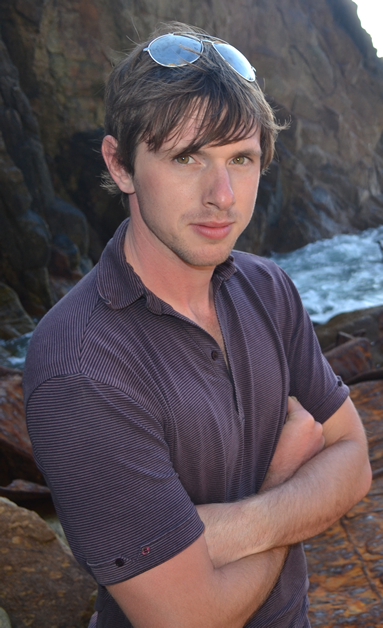
Kāi Tahu ki Tauranga Moana
By Laurie Loper
In spacious Kulim Park, on the inner harbour shore, a gathering of Ngāi Tahu whānau braved the warm but at times blustery conditions to mark with a picnic, the end of the year activities for Ngāi Tahu ki Tauranga Moana. Kulim was dotted about with groups and families enjoying the chance to begin the seasonal kick back and to catch up. Kaumātua to pēpi, our rōpū had all age groups represented with the young more prevalent. Once word got round, the gathering was added to by cheeky sparrows and just as cheeky tarapunga, the raucous voiced red-billed gull, both well practised in swooping in to sample any unprotected kai.
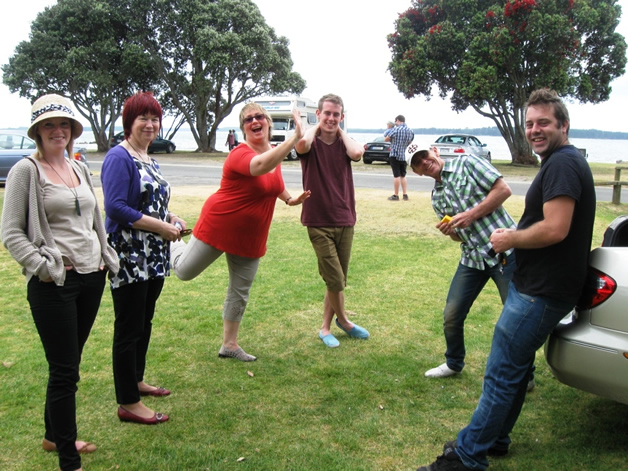
Fun times, Ngāi Tahu ki Tauranga Moana Christmas barbecue.
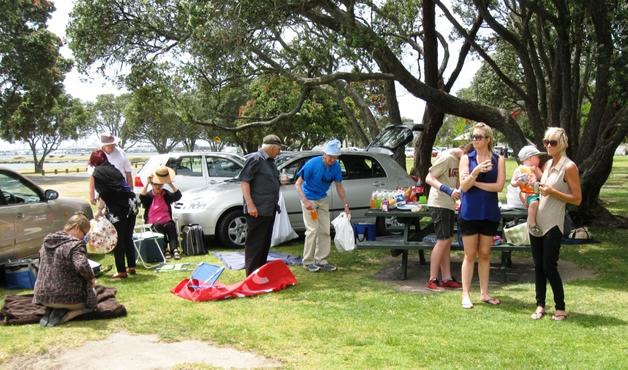
Whānau enjoying the picnic at Kulim Park, Tauranga.
Informality being the kaupapa, conversation was the main activity. A right smorgasbord of topics came up as you would expect from our Ngāi Tahu whānau, including; hearing about the voyage of the two waka to Rapanui, Jack Thatcher being interviewed by Radio NZ on board one of the waka as it reached Rapanui, Winston Peter’s return to the parliamentary scene, America’s part in the Palestine situation and what it means for world peace, praise for the choice of picnic venue, discussion about the future of our rōpū.

Front; Alec Were and Brian and Margaret Stephenson.
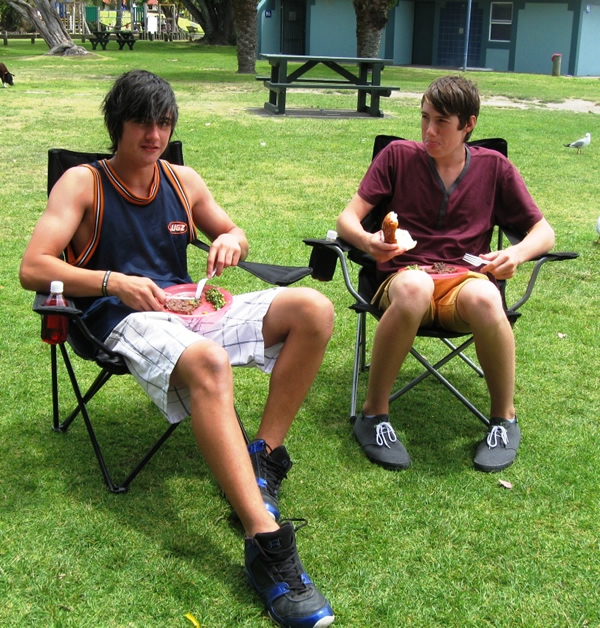
Arana Kamo-Watson and his friend enjoying the kai.
It was heartening to see plenty of young tamariki present, signifying there’s a healthy future for the rōpū, provided ways of sustaining their interest can be found. The numbers present necessitated a separate lolly scramble for the big-ies and the little-ies. Space-cramped city kids got a chance to gallop around and thereby feel the freedom, an experience all too rare in our increasingly crowded urban life style. Cameras were busy and the photos are available on our Facebook page (Ngāi Tahu ki Tauranga Moana).
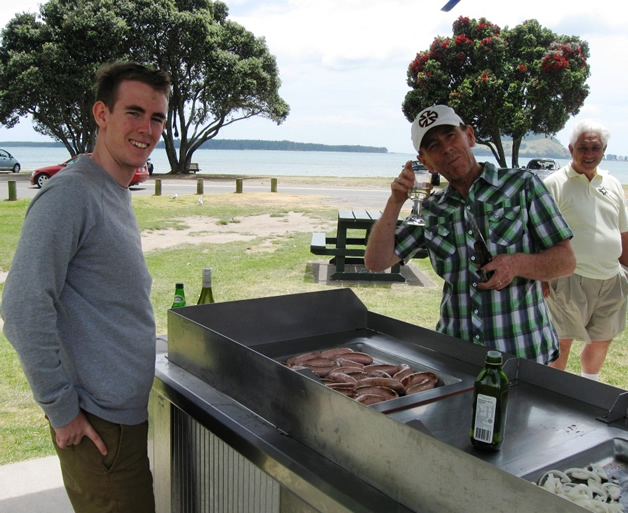
Chefs of the day – Cameron and Alec Were and Uncle Joe Briggs.
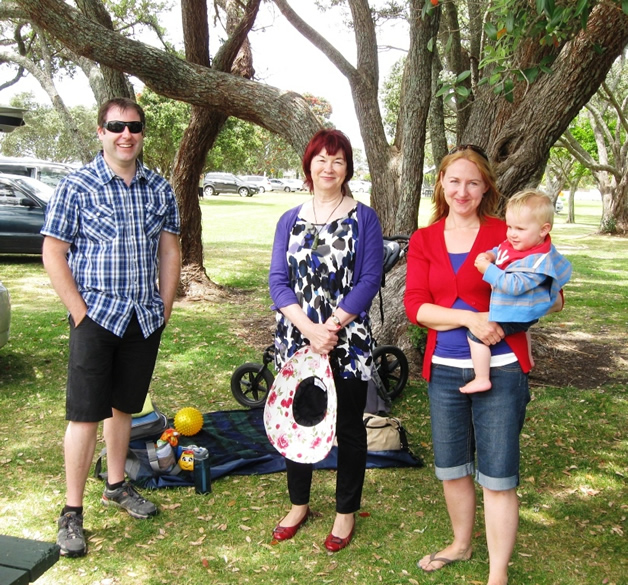
The Darmody whānau with Annis Somerville.
Chefs aplenty manned the BBQ, producing plenty of sausages (made by a Ngāi Tahu butcher), the fruits of their labours finding picnickers’ throats, none finding a tarapunga’s red beak. Not a day for swimming nor for beach fossicking – tide being at the full – but a day producing tired kids and satisfaction.